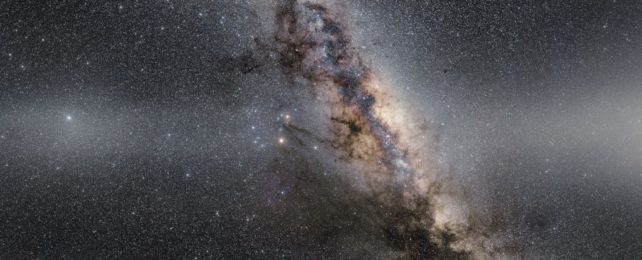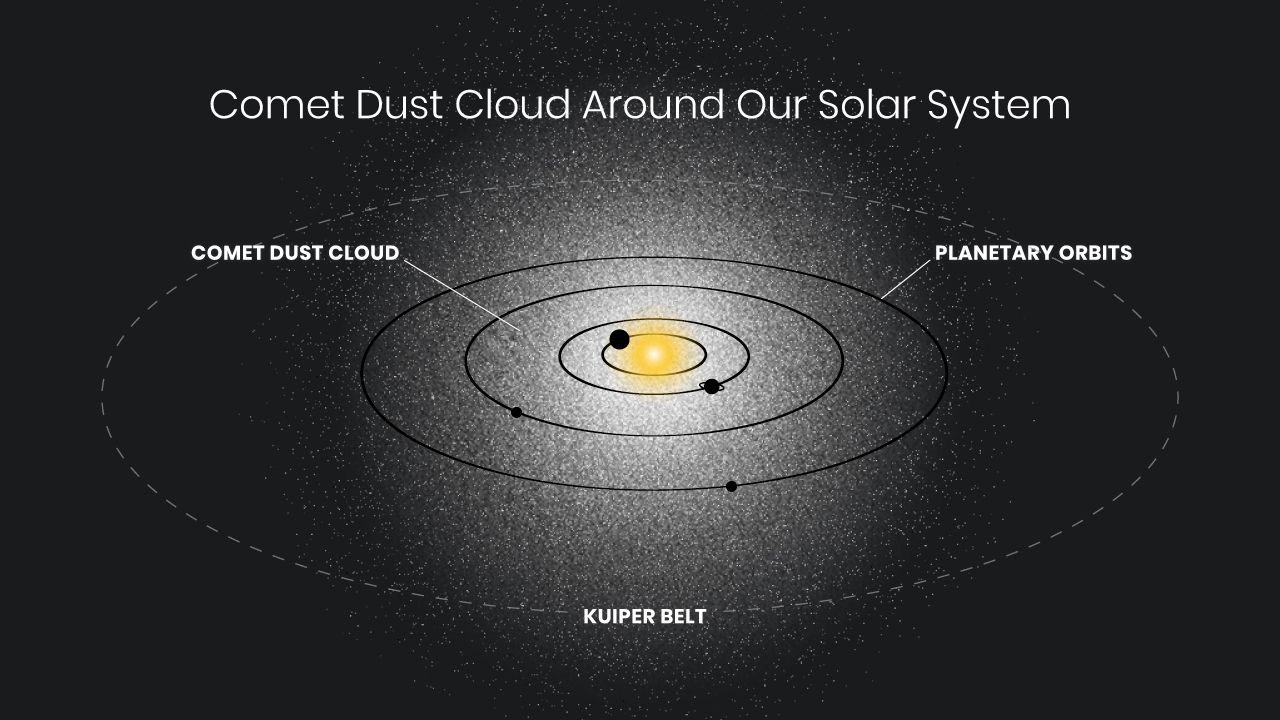A new analysis of Hubble data has clinched it: There’s too much light in the space around the Solar System.

Not much extra light, to be sure. Just a subtle, ghostly glow, a faint excess that can’t be accounted for in a census of all the light-emitting objects.
All the stars and galaxies surrounding the Solar System – and zodiacal light, aka dust on the Solar System’s plane – none of these can explain what astronomers are now calling “ghost light”.
After analyzing 200,000 Hubble images and taking thousands of measurements in a project called SKYSURF, an international collaboration is sure the excess light is real.
And, moreover, they can’t quite account for it. There are possibilities, but none of them have been confirmed. Not yet, anyway.
The strongest possibility? A dust component to the Solar System that we haven’t yet directly detected: tiny particles of dust and ice from a population of comets traveling inwards from the dark reaches of the Solar System, reflecting sunlight and generating a diffuse, global glow.
This source would be a bit closer to us than the extra light detected by the New Horizons space probe, which found an optical light excess in the space beyond Pluto, outside the Solar System.
“If our analysis is correct there’s another dust component between us and the distance where New Horizons made measurements. That means this is some kind of extra light coming from inside our Solar System,” says astronomer Tim Carleton of Arizona State University.
“Because our measurement of residual light is higher than New Horizons, we think it is a local phenomenon that is not from far outside the Solar System. It may be a new element to the contents of the Solar System that has been hypothesized but not quantitatively measured until now.”
There’s a lot of really bright stuff floating around the Universe: planets, stars, galaxies, even gas and dust. And generally, the bright stuff is the stuff we want to look at. So detecting ambient light in the interstitial places – interplanetary, interstellar, and intergalactic space – is a tricky thing to do.
However, when we do look, we sometimes find that things aren’t as we expect them to be.
For instance, something that we can’t account for in the galactic center is producing high-energy light. Voyager I found an excess of brightness associated with hydrogen at the boundary of the Solar System. There’s the New Horizons detection. Things just seem weirdly glowy out there.

The purpose of SKYSURF was to fully characterize the brightness of the sky.
“More than 95 percent of the photons in the images from Hubble’s archive come from distances less than 3 billion miles from Earth. Since Hubble’s very early days, most Hubble users have discarded these sky-photons, as they are interested in the faint discrete objects in Hubble’s images, such as stars and galaxies,” says astronomer and Hubble veteran Rogier Windhorst of Arizona State University.
“But these sky-photons contain important information which can be extracted thanks to Hubble’s unique ability to measure faint brightness levels to high precision over its three decades of a lifetime.”
Across three separate papers, researchers scoured Hubble’s archive for the signs of faint galaxies that we may have missed, and quantified the light that should be emitted by objects that are known to shine.
The team searching for hidden galaxies determined that not enough galaxies were missed to account for the extra light.
The resulting excess was, the scientists said, equivalent to a steady glow emitted by 10 fireflies across the entire sky.
This may not seem like much, but it’s enough to know that we’re missing something. And it’s important. Increasingly, scientists are finding ways to see the light between the stars. If there’s a local excess, we need to know about it, since it could skew our understanding of more distant ghostly glows.
And, of course, there’s the impact it could have on our understanding of the Solar System and how it’s put together.
“When we look up at the night sky, we can learn a lot about the Earth’s atmosphere. Hubble is in space,” says astronomer Rosalia O’Brien of Arizona State University.
“When we look at that night sky, we can learn much about what is happening within our galaxy, our Solar System and on big scales as the whole Universe.”
The three published SKYSURF papers have been published in The Astronomical Journal and The Astrophysical Journal Letters, and can be found here, here, and here. A fourth paper, submitted to The Astronomical Journal and yet to be published, can be found on preprint server arXiv.
Source: sciencealert.com







